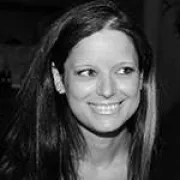Ever since its invention back in the 18th century, photography has been documenting life. At the same time, it focuses on inviting audiences to a rather subjective world while trying to be taken seriously as an art form. Photography has always been considered a male dominated profession, but luckily things are changing. Scholars, writers, bloggers, photography students and enthusiasts have been giving due to the female pioneers of the field. Most of them were always standing and/or hiding in the shadows, oblivious to how much they could acclaim and accomplish. Arguably, the technique, concepts and themes female photographers use, differ from those of male photographers. When most women were convinced that their place was in the kitchen and certainly not in the dark room, there were those who were struggling to surpass their male counterparts and work towards gaining respect and recognition for their work.
I had access to a whole world of women, to which no man could have access.

Christine Spengler (French photographer, 1945-) is a decorated war photographer who has been putting herself in the midst of conflicts since the 1970’s. The point of view of the victims of war has always been her primary concern and her pictures – mostly raw, yet tender – have been reproduced in the world’s leading newspapers and magazines. Spengler had originally studied French and Spanish literature in order to become a writer, but she found her true calling at the age of 23. While on a trip in Chad, she had borrowed her brother’s camera and photographed soldiers headed into battle. Both she and her brother were arrested and held in prison on speculation of being spies or journalists. That wasn’t enough to stop Spengler, who continued to focus on war photography, on the adapted daily life of women and children in the bomb targeted cities and the overall consequences of war. Christine would often integrate and immerse herself in different cultures, to capture intimate and accurate shots of her subjects. She worked as a freelancer for Sipa-Press, Corbis-Sygma and AP, while she documented wars in Northern Ireland, Vietnam, Cambodia, Lebanon, Western Sahara, Kurdistan, Nicaragua, Kosovo, Afghanistan, Iran and Iraq, among others. Spengler’s war images stand apart from those of her white male counterparts, since they depict the civilians’ attempts at a normal life after the ripple effects of a violent war. Her touching, traumatic and memorable photographs have won her several prizes, numerous publications and one major retrospective exhibition in 2003, in France. The epitome of a feminist and strong woman, Christine refrained from standing by the sidelines and hasn’t once worn a helmet or a bullet proof vest while working.
© Dr. Masumi Hayashi
Dr. Masumi Hayashi (American photographer, 1945-2006) was born in one of the United States government’s War Relocation Authority camps, where Japanese Americans were placed in internment during World War II. Hayashi had both a BFA and an MFA when she joined the faculty of Cleveland State University as Assistant Professor of Photography in 1982. She became a full time professor in 1996 and received numerous awards and grants during her tenure there. Masumi is perhaps best known for her prominent panoramic photo collages – made of hundreds of smaller prints – that served as a symbol of an archaeological and historical memory of WWII. Hayashi’s signature medium transcends the instantaneity of photography, as well as her rejection of authority implicit in a single fragment of time and space. Through her technique and through her subject matter, the photographer drew attention to the relativity of perception. The majority of Dr. Hayashi’s work concerns socially uncomfortable places, like prisons and relocation camps. Her artwork explores sacred sites and places with spiritual significance. The professor interviewed camp survivors from all over the USA and Canada and collected photos taken by them, when cameras were considered to be contraband. All this audio and visual material was featured as part of Hayashi’s artwork installation in galleries and museums. Masumi was tragically shot to death by a neighbour, after she had repeatedly complained about his loud music for months. She is survived by six siblings and two children. Dr. Hayashi’s work gained attention in the USA, Europe and Japan and was exhibited and represented in many respected museums and galleries, including the International Center for Photography in New York, the LA County Art Museum, the Japanese American National Museum, the Tokyo Museum of Photography, the Ludwig Museum of Art and many more. In 2003, she had a retrospective solo exhibit at the Japanese American National Museum in Los Angeles. Her photography has been published in many magazines and her art has awakened people in a discreet, yet insistent way. Even if certain aspects of Masumi’s artistic focus were autobiographical, she was avidly aware that her outlook was that of a woman, a Japanese American and a Buddhist in a mostly white, male dominated world.
We will continue talking about female names that left their mark in photography and about contemporary female photographers who are still to emerge. There are a lot of female photographers out there deserving of praise and we can only hope to cover as many of them as we can. Please, follow this space to find out more.
My photographs are meant to be appreciated for their beauty on one level yet, on another, to create irony and tension.









